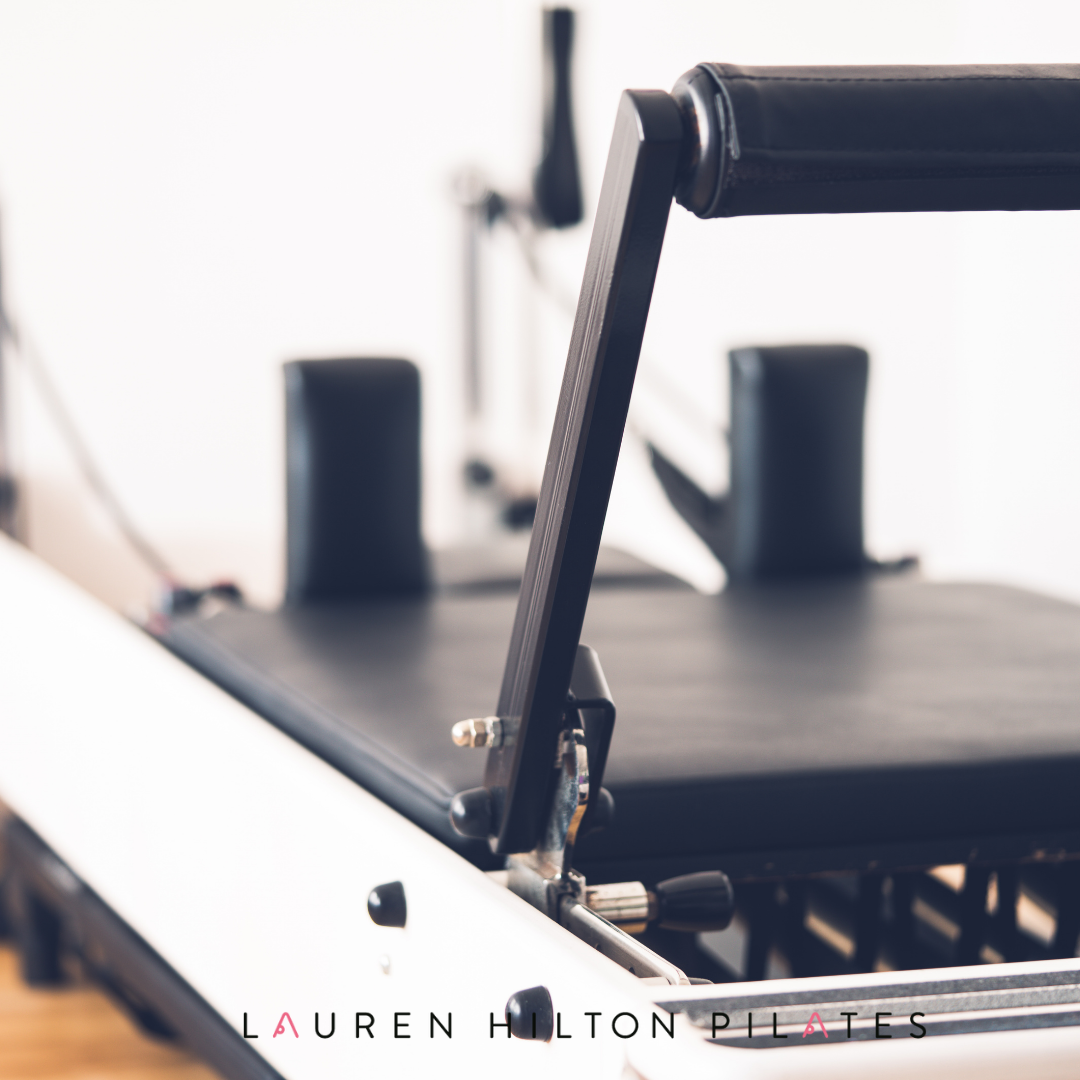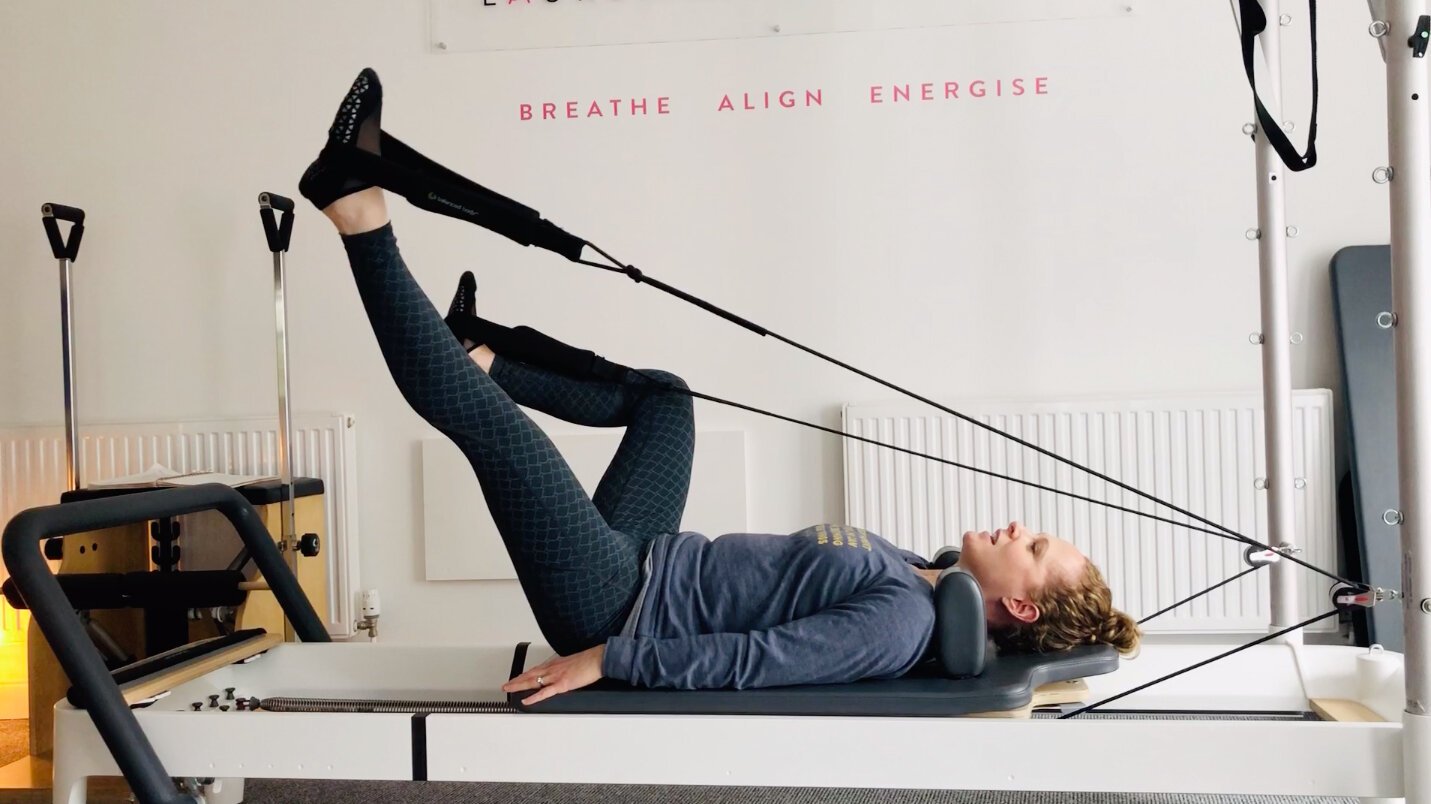What is the Pilates reformer?
Your guide to the reformer and why you might just like to give it a try!
Have you been inside a Pilates studio?
If you have, you’ll have seen the various pieces of equipment with bars, springs, pulleys and leather covered beds and will be forgiven if you felt you’d entered some kind of torture chamber, many of my clients raise an eyebrow when they first see the equipment! Whilst the Pilates equipment can look intimidating we will explain why using the Pilates equipment can do amazing things for your body.
This month we’ll focus on the reformer, which is probably the most well-known due to the popularity of reformer classes and various celebrity endorsements. We’ll give you the 101 as to why the equipment is so special and what it does.
The Pilates reformer – what is it?
Designed by Joseph Pilates (the man who invented the Pilates method), it has a rectangular bed-type frame which is either made from metal or wood. On the top of the frame is a padded platform which is on hidden runners, this means that it glides in and out the full length of the frame. At the end of frame is a footbar, this is adjustable so it can be adapted to suit different heights.
At the other end of the carriage are two ropes with lopped handles attached to pulleys, there are two loops, the shorter for your hands and the longer usually for your feet. There are also two shoulder pads and an adjustable head rest which make the experience on the reformer more comfortable.
The carriage glides along on runners is attached to the frame by 5 springs, all of which have different tension, and can be unhooked to make the carriage lighter of left on to make it heavier. By altering the springs you can make an exercise harder or easier, lots of springs will seemingly make an exercise seem ‘harder’ but mainly because more global muscles are involved but when you to an exercise with just one light spring it can extremely challenging as you have to tune into the seep stabilising muscles to help you control the carriage.
How does it work?
In most exercises there is some pushing or pulling and in others you keep the carriage still whilst the spring tension works against you. There are hundreds of different exercises and variations which can be performed lying down, kneeling, sitting and standing on the carriage. One of the main benefits of the reformer is that movements can be assistive or resistive, in other words made easier or more difficult.
The reformer can be assistive
When we are injured or have developed a movement pattern that isn’t useful then we need a way of re-educating our system into more efficient patterns or to rehab injuries, this is where the reformer is fantastic. For example following knee surgery and you don’t have full range of bending in your knee, by lying on the reformer using light springs you can re-introduce this movement as the carriage assists because the spring assists in the portion of the movement when your knee bends. Trust us on this, it helped us rehab following knee surgery five months ago!
It can also assist where traditional mat exercises might be hard to achieve. Roll-up on the mat helps to build flexibility and strength in the spine but doing it without over recruiting the wrong muscles or using momentum to ‘cheat’ is tricky. On the reformer you can hold onto the straps and use the springs to help you find the muscles that you need to ‘roll down’.
The reformer can add challenge
Standing exercises where one foot is on the headrest and the other is on the floor can be hard because the leg that pushes back is pushing against spring tension, this challenges the back of the leg and glutes more and is brilliant for runners as it helps to build good running form. Other exercises can me made challenging by making spring tension very light on an already non-stable carriage surface so that you have to use deep stabilising muscles and promote better balance and coordination. The straps and pulleys are designed to help improve mobility, flexibility and range of movement. If you struggle with tightness in your hips or shoulders then working on the reformer can create positive and lasting change.
Can everyone use it?
Yes, it is incredibly versatile which means because of the supportive environment of the carriage and springs it can be used by just about anyone. If you are pregnant, have recently had a baby or are managing or rehabilitating an injury. We have supported both Olympic athletes and clients recovering from surgery and know first-hand how effective it can be. Similarly if you want a form of movement that is different to any other then the Pilates equipment may be for you!
At Lauren Hilton Pilates we are a fully equipped Pilates studio in the heart of Shrewsbury town centre. We have with a reformer, tower bar, ladder barrel and chair. We have a science-led, rehab-based approach to Pilates. We’re not just about exercise, we know Pilates is so much more, it’s about the whole person, mind, body and soul. When you come to the studio we’ve got you, we’ll listen to you, meet you where you’re at, and aim to help you achieve your movement goals and we’ll have some laughs along the way. After all, we don’t think life should be taken too seriously!
Coming in September we’ll be bringing our studio equipment into a brand new Pilates Equipment circuits class, in a small class of 4, you’ll get to move though an hour long class where you’ll use all of the equipment available in our studio.
Find out more and sign up to the LHP Community to hear all of our latest news.




